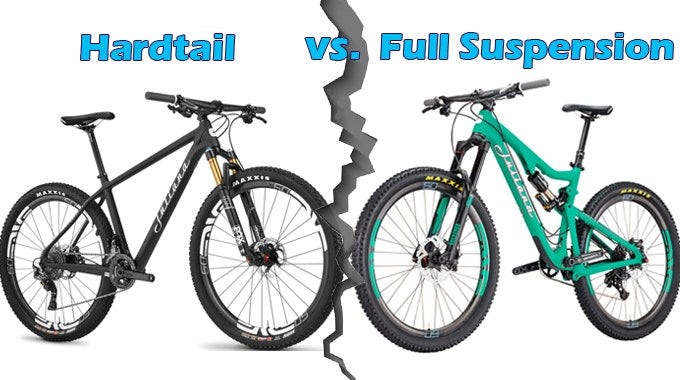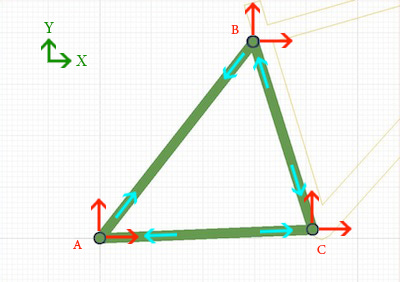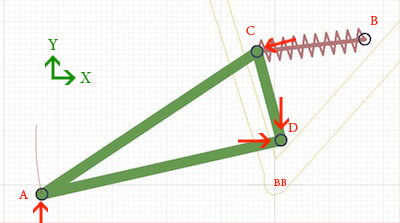Abstract
Vehicle suspension systems utilize the Laws of Mechanical Physics to dissipate forces acting on the wheels of a vehicle to provide stability. (I.E. traction & energy absorption)
This post will mainly address and discuss the Physics of suspension damping, specifically with regard to mountain bikes. This post will not be an opinion, conjecture, perception or personal preference piece. The Laws of Physics does not care about opinions or feelings! The aged argument and mostly opinions of what’s better; a full suspension or hardtail (front suspension) is one that mainly centers around Cross Country type of bikes. When the terrain is smoother dirt or gravel, with little roots and no rocks there is no question that a hardtail will shine, especially on climbs. But also applies to more modern ‘all trail bikes’
Analysis
The main and most beneficial aspect of a full suspension bike is the ability of the rear damping system to utilize Leverage and Bump absorption (aka- Bump Compliance) which provides increased rear tire traction. The ancillary benefits are improved kinetic energy dissipation (oscillation and vibration) and a more equal load transfer. This increased traction and performance capability potentially negates any weight penalty caused by the shock and swingarm. (chainstay & pivots) Full-suspension mountain bikes outperform hardtails over rocky and technical terrain, primarily due to the increased traction provided by the rear suspension. (I.E. shock and pivot/leverage points)
Riding over rough trails, the rear shock and pivots assist the tires to remain in contact as much as is possible with the ground , enabling improved grip/traction (I.E. Rolling Friction) rather than the Tire & Bike rebounding off the bumps and consequently forsaking rear grip. As a bike and rider hit obstacles, roots and rocks, full-suspension bikes significantly dampen the forces through the pedals, frame handlebars and consequently, the rider, which assists to lessen rider fatigue. (Force and energy absorption) Whereas the rear tire on a hardtail comes off the ground more frequently which takes an increase of energy from the rider to maintain stability and keep forward momentum going.
Subsequently the increased vibrations, oscillations and energy (forces) that are transmitted into the riders body on a hardtail will increase fatigue. When the rider’s body vibrates, there is friction between the muscle tissues. This friction creates heat, and the energy output weakens, producing less and less available energy to move the bike forward with stability. This is known as Suspension Losses. In essence increased Flex, or Damping, reduces Suspension Losses. Obviously there is a point of diminishing returns, too flexible, too soft would result in less rider efficiency as well.
Damping, or suspension components absorb the kinetic energy from each surface bump or depression. With a hardtail the rear tire, rim and frame are absorbing mostly all of the kinetic energy, then once released on the rebound, the stored energy is released into the riders feet, hands and body. And since the nearly full force of the energy is initially being absorbed and then released by the rear tire at first, the loss
of traction becomes even greater. These subsequent oscillating impacts and hysteric losses on a hardtail are much more significant and the impact harsher than on a bike with a rear shock and pivot points/linkage.
Explanation:
Hysteric Damping/Losses
(Mechanics) [Damping of a vibrating system in which the retarding force is proportional to the velocity and inversely proportional to the frequency of the vibration]
The main components of the suspension system are the damper and the spring. Mechanical law tells us the forces and energy contained in a compressed spring is defined by the following equation:
𝐹𝑆𝑝𝑟𝑖𝑛𝑔 = −𝑘 ∗ 𝑥
Here, k is the spring constant for the given spring and x is the distance the spring
is compressed. While understanding the forces accompanying a suspension system spring is important, it is also important to understand the energy associated with the spring. The kinetic energy (KE) contained within a compressed spring is shown in the equation below.
𝐾𝐸𝑆𝑝𝑟𝑖𝑛𝑔 = 1 2 𝑘 ∗ 𝑥 2
Although Hooke’s law is an idealized version, many springs aren’t linear in their force per distance compressed. Variable rate springs (I.E. air ‘springs’) are often used in modern mtb’s to produce specific effects. For example, these variable rate springs are used in suspension systems to produce softer effects at the beginning of the stroke but much firmer effects towards the end of the stroke.
(Slow speed bump compliance vs bigger and harder hits at the top the stroke)
This Progressive type of spring works well in most mtb applications.
The rear axle on a hardtail is static in reference to the bike frame. Whereas on a full suspension there is leverage between the shock mounting points, linkage and the rear axle. Suspensions on mountain bikes use the basic principal of Newton’ Third Law. But with a caveat; “Mutual forces of action and reaction between two particles are equal, opposite, and collinear” (both laying in a straight line).
Hardtail Axis & Forces
Riding over very bumpy, technical terrain, where there is a succession of multiple bumps and depressions, damping systems transfer nearly all of the reactionary forces into the bike and suspension instead of fully into the rider. Obviously a front suspension bike will absorb less of the reaction forces into the bike and suspension and more into the rider. Whereas the full suspension bike will absorb a greater amount of reaction forces, thereby transferring less energy and vibration into the rider. The main and most beneficial aspect will be increased traction at the rear wheel. (grip and stability)
(Various leverage ratios applied will be a factor in determining how efficient the damping will be)
Rear Suspension Axis & Forces
And surprisingly enough when there is more traction available at the rear there is also less loss of traction at the front. This would be a result of the front-rear balance
(Load Transfer) of the damping systems, working in sync. Additional benefits are increased stability and ultimately less rider fatigue.
Conclusion
The bottom line and take-away is this;
On anything but relatively smooth dirt/gravel types of terrain, a full suspension bike will always outperform a front suspension bike (hardtail). The scientific Proof of Concept reasons are absolutley inarguable. It simply comes down to the Laws of Mechanical Physics- Applied Forces and Kinetic Energy. Not perception, not ‘feel’, not opinion. End of story, get over it.
Granted, damping coefficient is a not-so simple theory and application, but in the
end the correct type and amount of damping provides more traction, while lessening energy absorption (Oscillations and Vibrations) into the rider. These subsequent actions of a Dual Suspension bike thereby increase both bike and rider performance and efficiency.








Fantastic Read George brilliant explanation for Me. Keep writing great job